Breast Augmentation
Breast augmentation, also called “augmentation mammaplasty,” is a procedure designed to enhance the size and improve the shape of a woman’s breasts with the use of an implant.
Model
Breast implants are available in different shapes and sizes. The shell of the implant is made of a silicone-based material, and implants may be filled with a silicone gel or saline.
Implants are placed for a medical need, such as in breast reconstruction after cancer treatment, or to enhance the appearance of the breasts for cosmetic reasons.
If you’re considering breast augmentation surgery, consult a board-certified plastic surgeon. It’s important to understand what breast augmentation surgery entails, including possible risks and complications as well as set realistic expectations.
Breast Augmentation Before & After Photos
Details
9 weeks postop
- Procedure: Abdominoplasty with liposuction, removal of saline implants (ruptured left implant), mastopexy with placement of cc silicone implants
- Age: 60-70 yo female
60-70 year old female is 1 month postop from surgery. She had an abdominoplasty, rectus muscle plication and umbilical repositioning with liposuction, removal of saline implants (ruptured left implant), mastopexy with placement of cc silicone implants
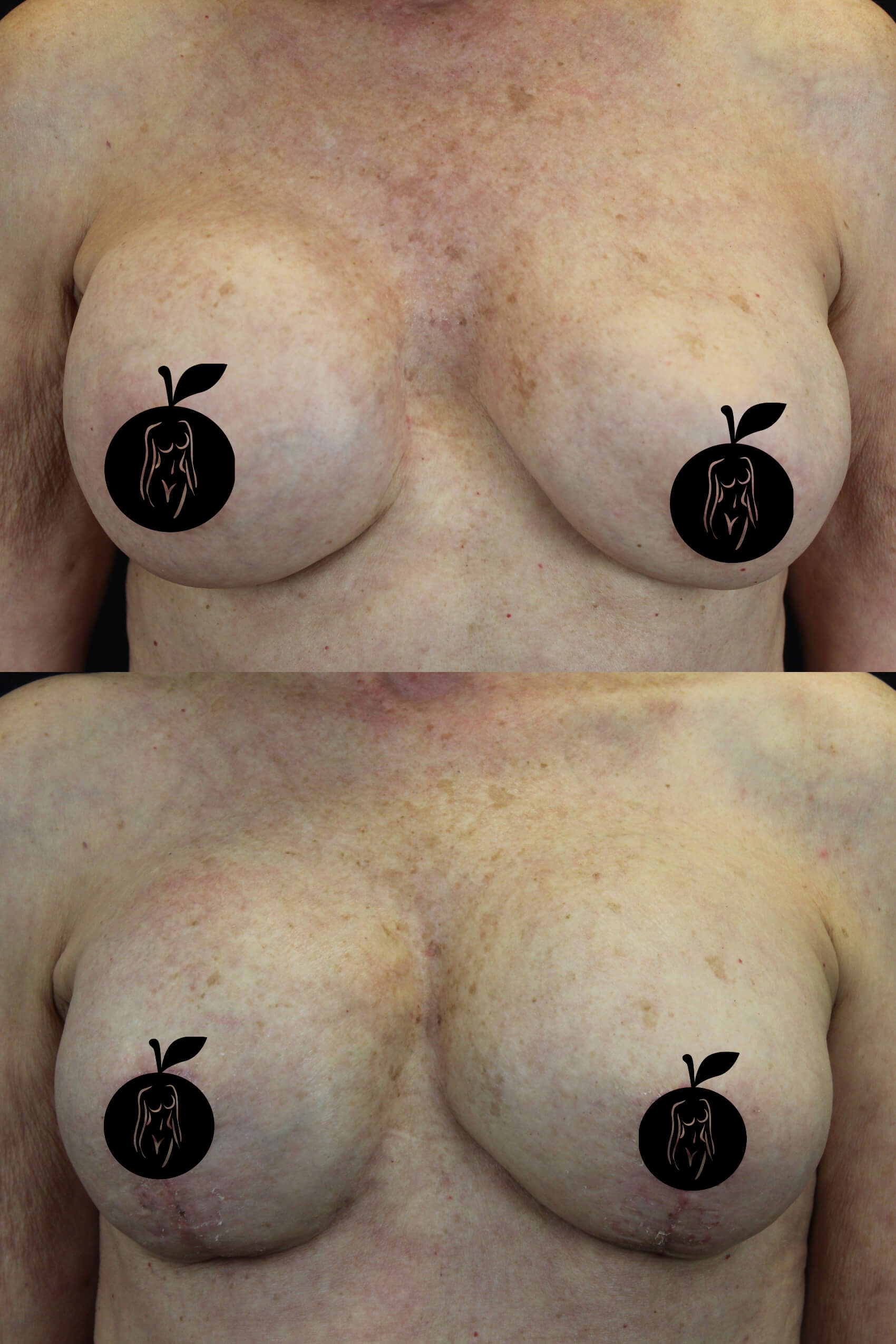
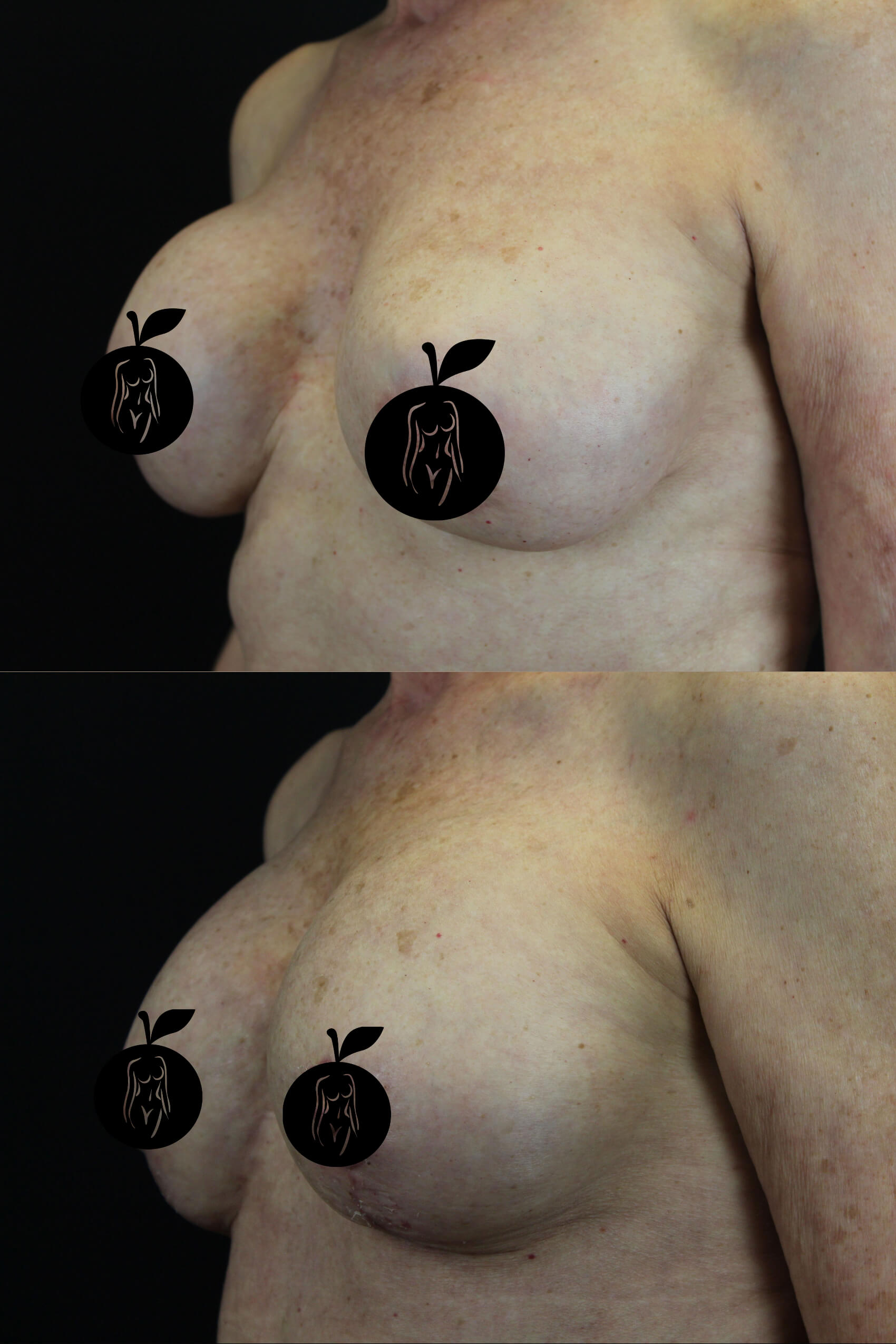
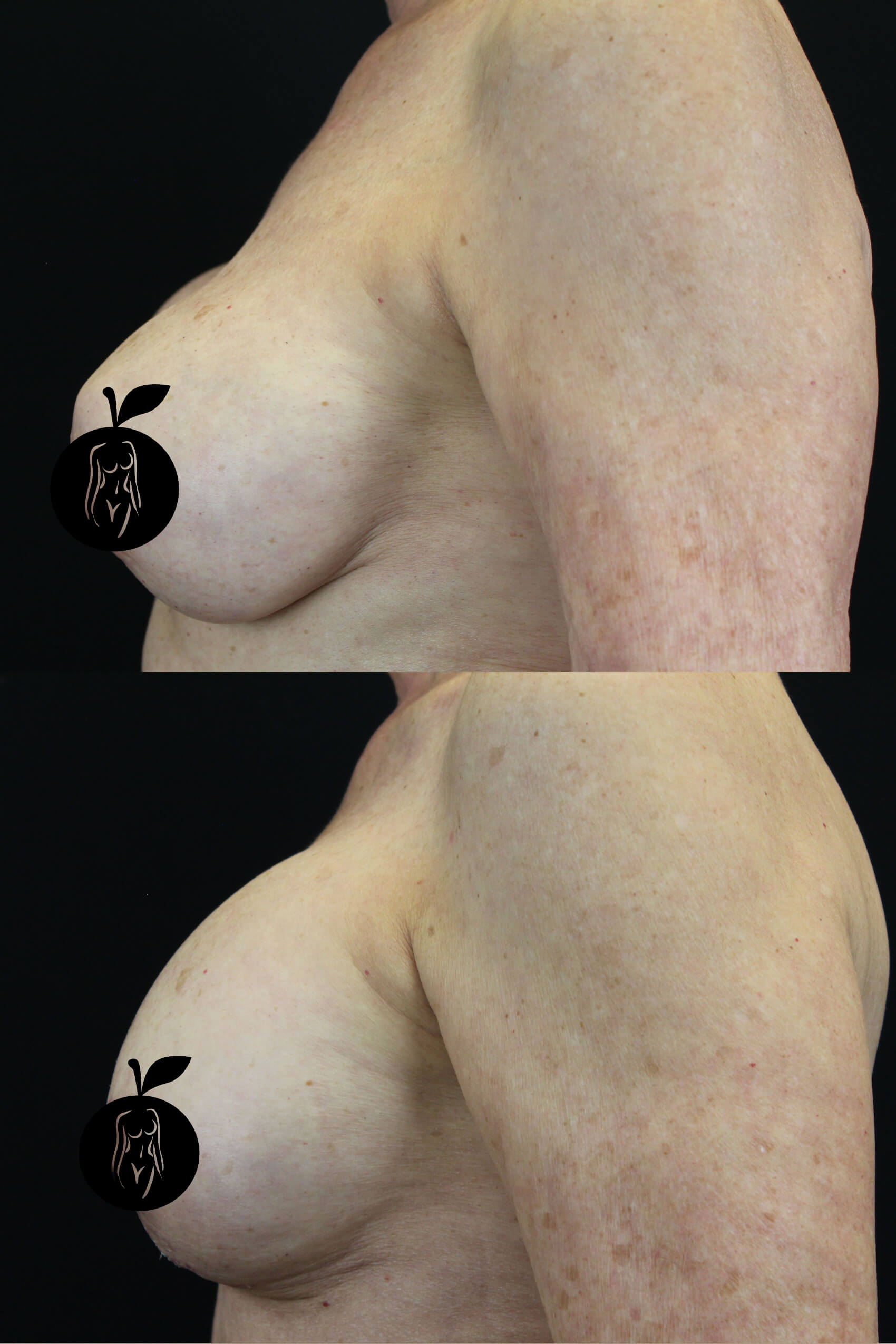
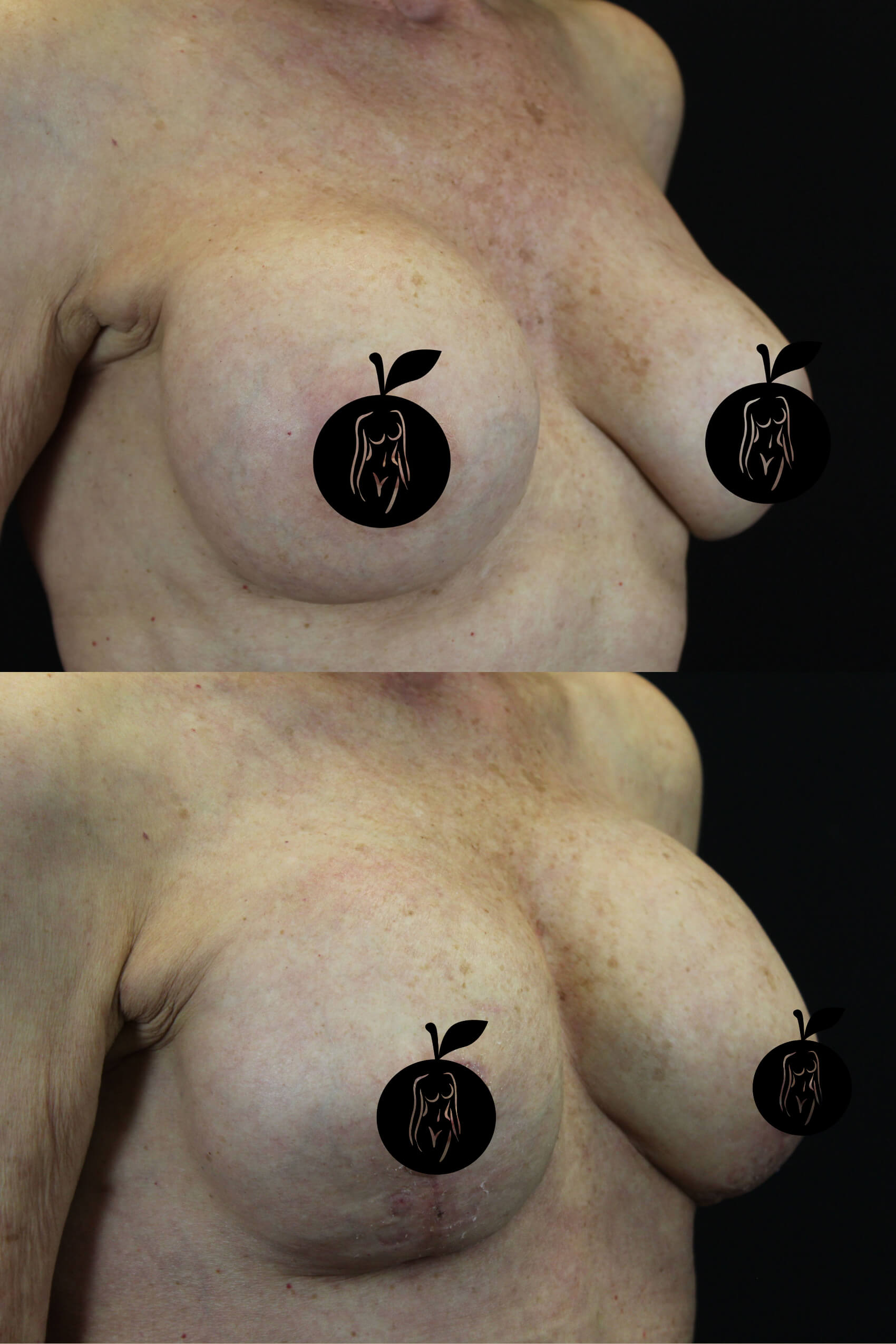
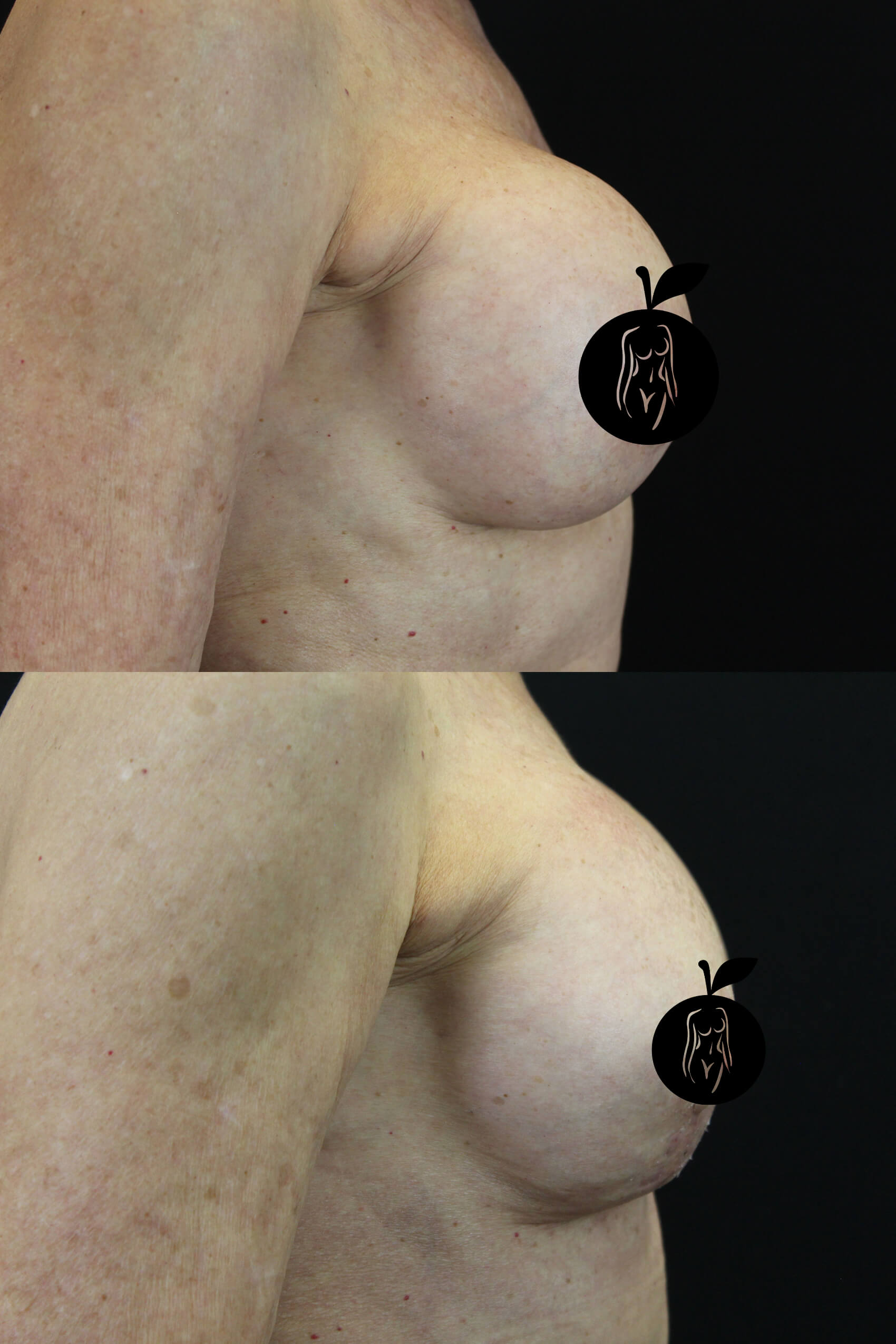
How do I know if a breast augmentation is right for me?
Women have many different reasons for choosing breast augmentation surgery, but most of them fall into one of these four categories:
Naturally Small Breasts
Women who have small breasts or asymmetrical breasts due to genetics can achieve enhanced volume and natural-looking results with breast augmentation.
Change in Breast Size After Pregnancy
Pregnancy and breastfeeding often lead to a reduced breast size and cause a deflated breast appearance. Breast augmentation can help restore your original breast volume or enhance your breast to a fuller and larger size.
Breast Revision
If a previous breast surgery was unsatisfactory a secondary breast augmentation can be performed to meet your size expectations or correct the desired upper breast fullness.
Sagging Breasts
Aging, pregnancy, and significant weight loss can cause the breasts to sag and have a poor shape. A breast augmentation (often performed with a breast lift as implants for this reason are limited for optimal results) can improve the shape of the breasts and provide a more youthful appearance.
Model
Breast Augmentation Options – Silicone vs. Saline
Silicone Implants
- FDA-approved for women 22 years or older
- Pre-filled with silicone gel
- Lower rate of rupture than saline implants
- Said to feel more natural than saline implants
Saline Implants
- FDA-approved for women 18 years or older
- Filled with sterile saltwater solution after insertion
- If a rupture occurs, it will be noticeable immediately
- Size can be adjusted during surgery
The Breast Augmentation Process
Consultation
Once you fill out the online questionnaire, you will be contacted to confirm an appointment for a one-on-one consultation with the surgeon. You may also provide photos through our HIPAA compliant system and during your visit your surgeon can provide a personal 3D simulation of different sizes and profiles using your own photos.
This appointment also includes an analysis of your health history, any medications you are taking, and what you desire to achieve with the procedure. Please have all of this information with you when you come to your appointment. All of which can be submitted electronically through our HIPAA compliant patient portal.
The surgeon will discuss the techniques that will best provide you with the results you desire and answer any questions you may have.
Preoperative Instructions
Your surgeon will review in detail all of the information you need to know prior to surgery.
Generally, patients should avoid nicotine products six weeks before surgery and stop taking anti-inflammatory medication (e.g., aspirin and ibuprofen) for at least two weeks before surgery. Some vitamins and supplements may also cause problems during or after surgery, so it is best to avoid them or to talk to your surgeon about potential side effects.
You may be asked to bathe using an antibacterial soap before your procedure.
Eating and drinking restrictions include:
- 8 hours before the procedure – stop eating heavy meals or foods, such as meat, fried foods, or fatty foods.
- 6 hours before the procedure – stop eating light meals or foods, such as toast or cereal.
- 6 hours before the procedure – stop drinking milk or drinks that contain milk.
- 2 hours before the procedure – stop drinking clear liquids.
You may be asked to obtain blood tests and/or a mammogram.
Be sure to arrange for someone to drive you home and care for you for the first 48 hours after your procedure.
Model
During the Procedure
Breast augmentation is performed with general anesthesia, in a surgery center, and takes less than two hours to complete. An IV will be inserted into one of your veins. Based on the techniques agreed upon during your consultation, the surgeon will place the implants either above or below the pectoral muscle. Incisions are most commonly made either around the areolas or beneath the breasts at the crease and are closed with absorbable sutures. In most cases drains are not used if only implants are placed.
Recovery
After surgery, your blood pressure, heart rate, breathing rate, and blood oxygen level will be monitored until you leave the surgical center. You may continue to receive fluids and pain medicines through an IV.
You will have to wear compression stockings to help prevent blood clots and reduce swelling in your legs. You will be advised to wear a compression bra to aid with breast swelling and to keep you comfortable. Breast swelling will typically subside after about three weeks but may last as long as 6 months.
Expect pain, bruising, and tenderness for which you will be provided pain medications as needed.
For the first few days after surgery you will need to get plenty of rest. You will be provided with exercises to be performed during your recovery. Most patients are able to return to work in one week and resume regular exercise after about six weeks.
Your surgeon will give you more detailed information about what you can expect during your recovery.
Breast Augmentation FAQs
Q. Who are the best candidates for breast augmentation?
A. The best candidates for breast augmentation wish to increase the size of their breasts. Most were either born with naturally small breasts or suffered deflation due to pregnancy, weight loss, or aging. Patients who have excessively sagging breasts may be better candidates for a breast lift or a breast lift with an augmentation. Ideal patients are also in good physical health and do not smoke or use any nicotine products.
Q. What type of implant should I choose?
A. There are many implant choices available. You have the opportunity to choose between textured or round, silicone or saline, high or moderate profile, and a range of sizes. Your surgeon will recommend the best implant options for you based on your physical anatomy and desires for the procedure.
Q. Where are the incisions made?
A. The two most common incision locations are under the breast along the crease (inframammary) and around the nipple (periareolar). Other incision locations include in the underarm (transaxillary) and through the umbilicus (transumbilical, or TUBA). Your surgeon will discuss the pros and cons of each to help determine the best incision location for you.
Q. How long will my breast implants last?
A. Breast implants are not considered lifetime devices and may need to be replaced at some point after the original surgery. However, most surgeons agree that replacement is not necessary unless an issue arises. On average, most women have their implants replaced between ten and fifteen years after they are first inserted.
Q. What complications can occur?
A. As with any surgery, there is a risk of developing complications after breast augmentation. Although rare, the most common complication is capsular contracture. This results in hardening of the breasts caused by scarring surrounding the implant. It can be painful and may require more surgery. In rare cases, infection develops that cannot be treated, and an implant needs to be removed. Blood may pool near the incision area (hematoma). Damage to nearby structures or organs. Other complications include implant rupture, symmastia, double-bubble deformity, asymmetry, scarring and implant rippling. Breast implant-associated anaplastic large cell lymphoma (BIA-ALCL) is a type of cancer that may develop after breast implants. This is rare.
Q. Is there scarring with breast augmentation?
A. Incisions are placed in locations that are as inconspicuous as possible, and the resulting scars will fade significantly over time. Protecting your scars from the sun will help prevent them from darkening.
